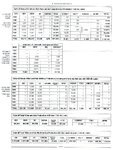I have not seen the post where it was revealed that this list does not include armament and communication equipment, maybe someone can point me to it. I just find it very odd to have a breakdown list of the main components of a tank, even point out specifically that the weight includes armament, but then put a price under that doesn't include a significant portion of the above mentioned bulletpoints that's all.
Last edited:


